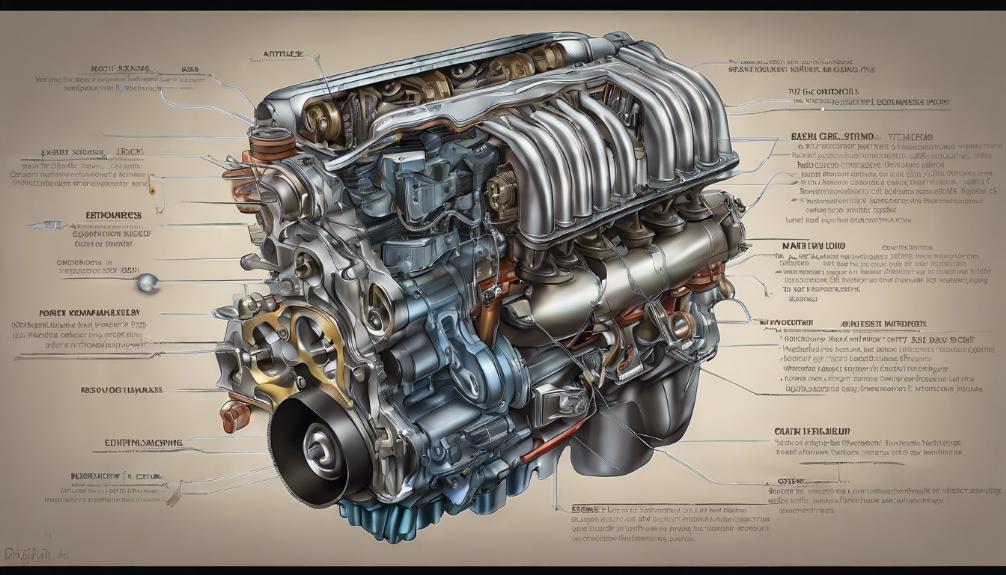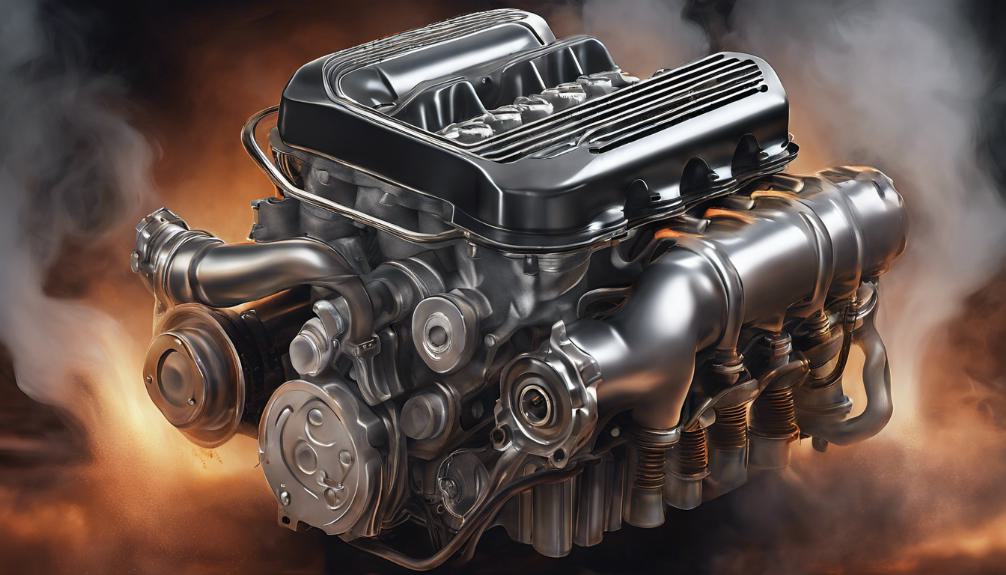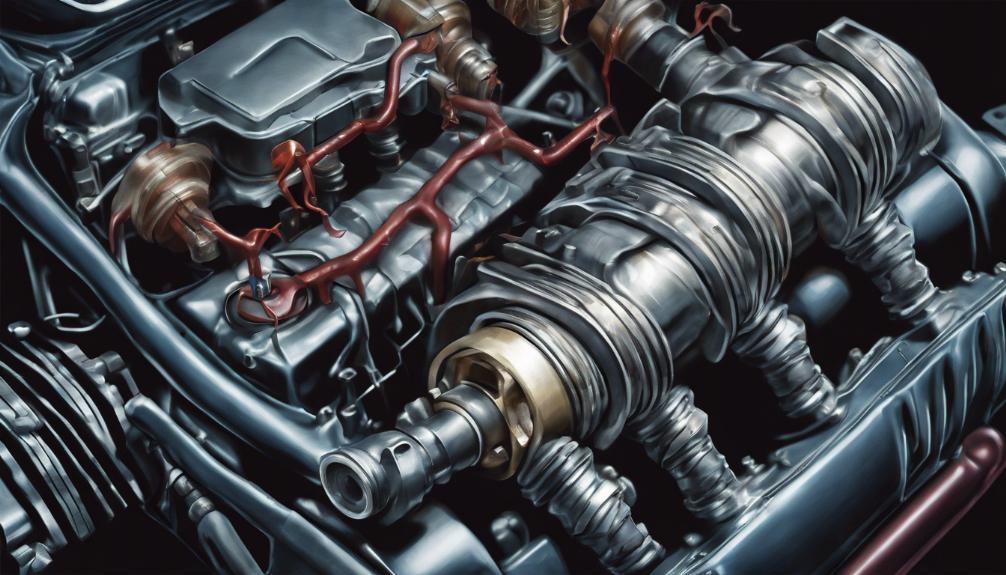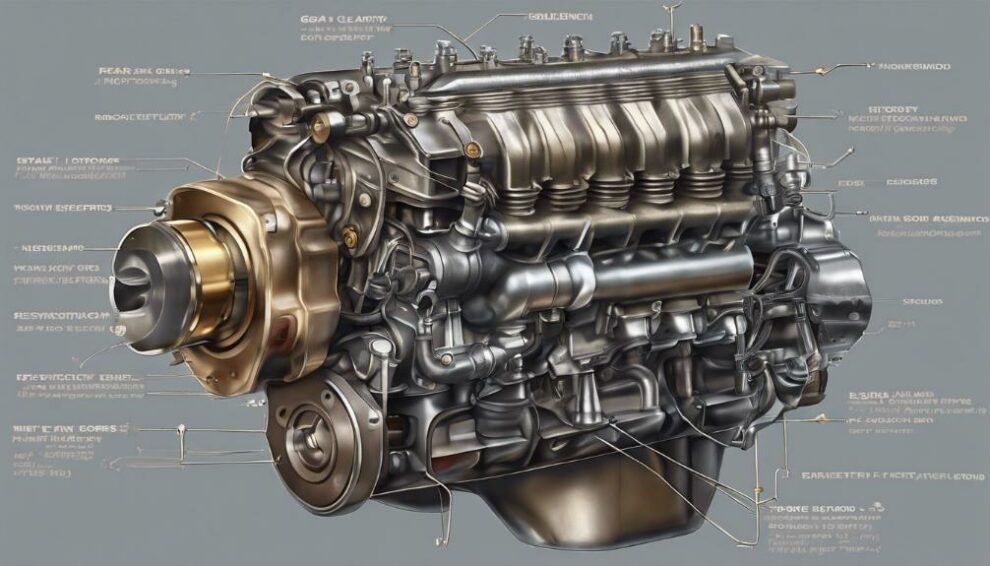The EGR solenoid manages vacuum flow to the EGR valve, important for your vehicle's performance. Symptoms of malfunction include engine pinging, decreased fuel efficiency, and a lit Check Engine Light. Faulty EGR solenoids disrupt engine and emission control systems, triggering legal issues in some areas. To maintain it, regularly clean for carbon buildup, inspect hoses for leaks, and confirm electrical continuity with a multimeter. Finally, understand that pinpointing issues, checking valve blockages, and handling related hoses are essential. Knowing replacement costs between $150 to $400 should also be part of your plan.
Key Takeaways
- EGR solenoid controls vacuum flow to EGR valve for engine optimization.
- Common symptoms of faulty EGR solenoid include pinging, Check Engine Light, and decreased fuel efficiency.
- Malfunction disrupts EGR system, impacting performance and emissions control.
- Maintenance tips include regular cleaning, hose inspection, and electrical testing.
- Troubleshooting for engine issues, inspecting valve, and checking vacuum hoses are essential.
EGR Solenoid Function

The EGR solenoid efficiently controls the flow of vacuum to the EGR valve. This operation is essential for the proper functioning of the EGR system in your vehicle. By regulating the opening and closing of the EGR valve based on the engine's needs, the EGR solenoid helps optimize performance and reduce harmful emissions.
When troubleshooting issues related to the EGR solenoid, it's important to check for vacuum leaks that could affect its operation. Ensuring that the solenoid is receiving the correct voltage and that its electrical connections are secure is also critical. Any malfunction in the EGR solenoid can lead to various engine performance issues, affecting fuel efficiency and emissions output.
Understanding the role and operation of the EGR solenoid is key to diagnosing and resolving problems efficiently. Proper maintenance and timely repairs of the EGR solenoid are essential to keep your vehicle running smoothly and environmentally friendly.
Common Symptoms of Faulty EGR Solenoid
Experiencing engine pinging during acceleration could signal a faulty EGR solenoid. If your vehicle's engine performance feels off, the EGR solenoid might be the culprit.
Another common symptom of a failing EGR solenoid is the illumination of the Check Engine Light. When there are issues with the EGR solenoid, emissions failure may also occur.
If you suspect a problem with the EGR solenoid, it's crucial to address it promptly to avoid potential consequences like decreased fuel efficiency and engine performance.
Troubleshooting tips for diagnosing a faulty EGR solenoid include checking for engine pinging, monitoring the Check Engine Light, and inspecting emission levels. Remember to examine related vacuum hoses when replacing the EGR solenoid to guarantee proper functioning.
After replacing the EGR solenoid, confirm that the EGR valve operates correctly to maintain excellent engine performance.
Impact of EGR Solenoid Issues

Improper functioning of the EGR solenoid can greatly impact your vehicle's engine performance and emission control systems. When the EGR solenoid malfunctions, it disrupts the exhaust gas recirculation process, leading to a decrease in engine performance and an increase in emissions.
This can trigger the check engine light, signaling a need for immediate inspection and repair to avoid further damage. Furthermore, faulty EGR solenoids can cause your vehicle to emit more pollutants, reducing fuel efficiency.
Ignoring these issues not only harms your engine but can also result in legal consequences in emission-regulated areas. It's essential to address EGR solenoid problems promptly to maintain excellent engine performance, reduce emissions, and ensure compliance with emission standards.
EGR Solenoid Maintenance Tips
Addressing EGR solenoid maintenance can help prevent performance issues and emissions concerns in your vehicle. Regularly inspect and clean the EGR solenoid to prevent carbon buildup, which can hinder its operation.
Check the vacuum hoses connected to the EGR solenoid for cracks or leaks that may affect its functionality. If you encounter EGR solenoid troubleshooting issues, testing it with a multimeter can verify electrical continuity and functionality.
Utilize EGR solenoid cleaning techniques to guarantee peak performance. Moreover, following the manufacturer's recommended maintenance schedules for the EGR solenoid is essential to prevent costly repairs and maintain emission compliance.
Commonly Asked EGR Solenoid Questions

Have questions about your vehicle's EGR solenoid? When it comes to EGR solenoids, troubleshooting is often necessary to pinpoint issues affecting your vehicle's performance. If you're experiencing symptoms like engine pinging during acceleration or the check engine light coming on, it could indicate a problem with the EGR solenoid. In such cases, inspecting the EGR solenoid for faults or blockages in the valve is vital. Moreover, checking the related vacuum hoses for leaks or damages is recommended as part of the troubleshooting process.
As for EGR solenoid replacement cost, it can vary depending on the make and model of your vehicle, as well as the labor rates in your area. Generally, the cost of replacing an EGR solenoid ranges from $150 to $400, including parts and labor. Keep in mind that timely replacement of a faulty EGR solenoid is essential to maintain proper engine function and emission control. If you suspect issues with your EGR solenoid, consult a qualified mechanic for diagnosis and potential replacement.
As an Amazon Associate we earn from qualifying purchases.










